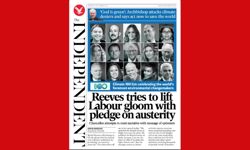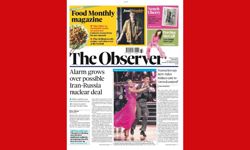It did not uphold a complaint under Clause 10 (Clandestine devices and subterfuge) of the Code.
The coverage related to the police investigation into the deaths of John Didier and Annette Creegan. The first reported that a police list of items retrieved from the boat had been "revealed" and included a description of several of the items. The complainant, who represented Norfolk Constabulary, argued that the coverage breached Clause 10 of the Editors' Code. She said that this information was intended only for the police. An officer at the scene had been carrying an evidence log which had been captured by in a photograph by a press agency photographer situated some distance away. In the complainant's view, the publication of this material represented a breach of Clause 10. The complainant also raised concerns under Clause 1 of the Editors' Code, saying that the newspaper's presentation of the evidence list had suggested that the police had "proactively and officially" released the information to the media.
The newspaper argued that there had been no element of subterfuge and that the information had been obtained as a result of "legitimate journalistic enterprise". The photograph had been taken with a standard camera by a photographer in a designated media area. It said the photographer had not intended to photograph the evidence list, which had only been noticed in the shot by a reporter afterwards. With regard to the accuracy complaints, the newspaper did not accept that its account had been significantly misleading: the information had come from police sources (albeit not officially). Nonetheless, it offered to publish a clarification on page 2 of its print edition of the newspaper as well as online noting that the information had not been "volunteered" by police.
The Commission acknowledged that "press coverage of ongoing police investigations serves an important public interest" but noted that it also carries risks, "not least of compromising public trust in the police to conduct such inquiries with appropriate regard for the privacy of individuals concerned". It said that in such cases there was a "particular value in publications being transparent, to the extent possible, about the provenance" of information used in reporting. It ruled that the coverage suggested, misleadingly, that the evidence list had been provided voluntarily by police sources, and that this was a matter of significance in the context of the investigation. This breached Clause 1, but the newspaper's offer of a clarification was an appropriate remedy under the Code. It did not find a breach of Clause 10, noting that the photographer had been standing in an approved location, and that there was "no evidence that [he] had sought to disguise his motive or actions".
An additional complaint under Clause 1 about the second article was not upheld.
To read the adjudication, please click here.
The clarification was published by The Sun on page 2 on Thursday 21st February 2013.
The Editors' Code of Practice can be read on the PCC website at www.pcc.org.uk
The online articles were taken down from The Sun's website before the complaint to the Commission.










